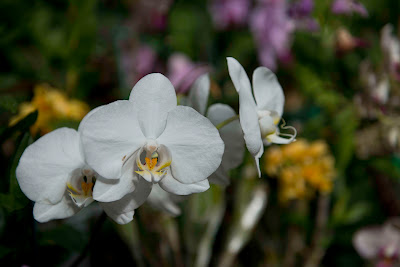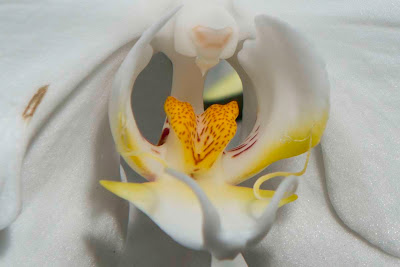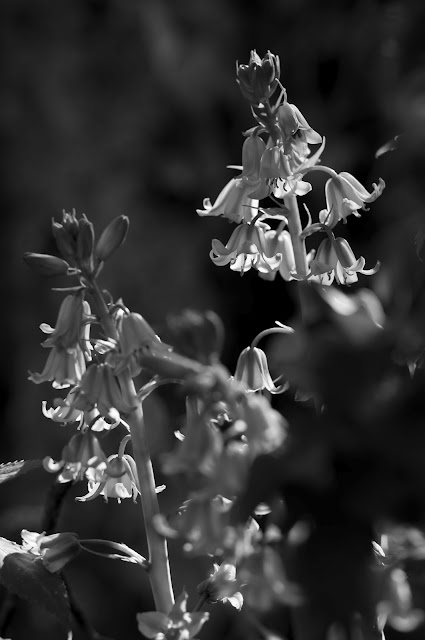An early morning start at the Wintergarden Pavilion in Auckland's Domain this morning where I attended an excellent
BNI breakfast meeting. Quite a diverse number of trades and talents available in this chapter and a very welcoming group of people. Hopefully a few referrals will eventuate after today's sesssion.
 |
| The Wintergarden Pavilion in Auckland's Domain |
As you might expect from the name of the Pavilion, close by in the Domain is the Winter Gardens. Started in 1921 when the Cool House was completed, the Winter Garden Complex wasn't completed until the complimentary Tropical House was built in 1928 and then officially opened on the 2nd May.
 |
| Rose Grape in the Tropical House, 55mm, f8, 1/20sec, ISO 100. |
It was the Tropical House in which I decided to take some photos and thought I'd try a different technique to usual. Often people snap away at the various blooms, seed pods and leaves and don't use a tripod. Also, the way exposure ond focus are selected tends to be automatic. Today I used a tripod for all shots, used an aperture priority mode on the camera not only to ensure I had the depth of field I wanted, but to shoot at the lens's optimum aperture, and used LiveView for focussing - not something I'd really bothered with previously.
The lens used was a Nikkor 24-70mm zoom with which I'm experimenting to see how it behaves at different focal lengths and apertures. I'd always thought f8 to be an optimum aperture to use, so a few shots you'll see here were taken at that aperture. I've taken others at f4, f5.6 and f11 just so you can see a difference in sharpness and background blur.
The first shot, of the rose grape, was taken at f8 with exposure taken for the flowers themselves. This is a truly gorgeous flower and the contrasts between the rich greens and lovely cerise colour of the blooms was quite lovely. Quite nice contrasts with the leaves too.
 |
| 70mm, f4, 1/1000sec, ISO 100 |
Shot two and three in this post are essentially the same. The only difference is a change in aperture. The first shot was taken at f4, whereas the second shot was taken at f8. The idea behind the first shot was to increase the blur of the background but retain a high level of sharpness in the orchid bloom. f4 should be quite sharp for this lens where you want it to be, but how does is compare when stopped down to f8? Perhaps compare the images and let me know what you think?
 |
| 70mm, f8, 1/320sec, ISO 100 |
There's definitely more detail in the background when shot at f8, but is it too distracting? LiveView gives a very good indication of what's in focus and what's not, but nowhere near as good as looking on the monitor at home.
So, there a difference in background blur, but what about the sharpness of the orchid? Is there a noticeable difference between apertures? Perhaps images five and six may answer this question.
 |
| Tight crop of image three (f4). |
I was quite surprised to be honest. I thought at f4 the lens would be pretty sharp, and perhaps by f8 things my be tailing off a bit in terms of sharpness. Looking at the two images there's quite a difference between the two apertures, and rather more than I expected. This are pretty heavy crops, but do give an indication a change in aperture can produce should you decide to enlarge your images. Even if you're using a laptop to view these images I suspect these crops of the orchids will be greater than lifesize.
 |
| Tight crop of image four (f8) |
Quite an interesting exercise and all part of the process of better understanding the quirks and foibles of your equipment. Much better to learn what you can do to get the best possible image from your equipment when at your leisure rather than under pressure when failure may bring disappointment.
The last two shots in this post are not of flowers, but of other parts of a plant. Often textures and shapes can be just as interesting as a bloom. I'm especially fond of palm type leaves and the shapes they produce. They have such graceful curves and depending on the way the light hits them can look really quite special. Shot seven was taken at f11 just so I could get a closer look at the edges of the leaves on my monitor at home. Sometimes edges can get purple or green edges (chromatic aberration), they can look a little soft, or sometimes they perform REALLY well indeed. As it happens, this lens at 70mm seems to be doing rather well.
 |
| 70mm, f11, 1/80second, ISO 100 |
The last shot was just a bit of fun. On the way out I noticed this pitcher plant. Amazing plants.
 |
| 70mm, f5.6, 1/40second, ISO 100 |
I picked f5.6 as I didn't want too slow a shutter speed. The plant was near the door and was moving slightly in the breeze, but I wanted reasonable depth of field. I want all of the pitcher in focus - especially that rather lovely "lid". However, I didn't want too much depth of field otherwise the wall and other rubbish would be too distracting.
Quite a lovely place to visit. If you'd like to see more, take a squiz at
the Winter Gardens Facebook page as apparently they keep adding photos on there as new blooms appear.
I hope the above has been of interest. Perhaps let me know what you think - and if there's any questions, please feel free to ask.



















































